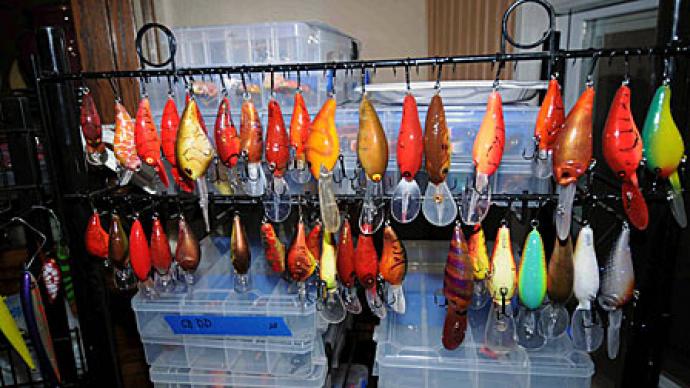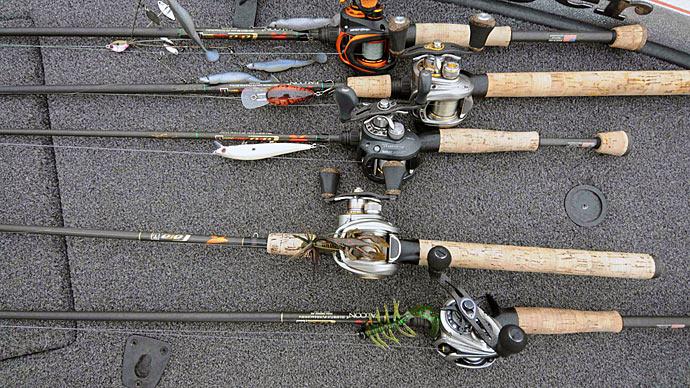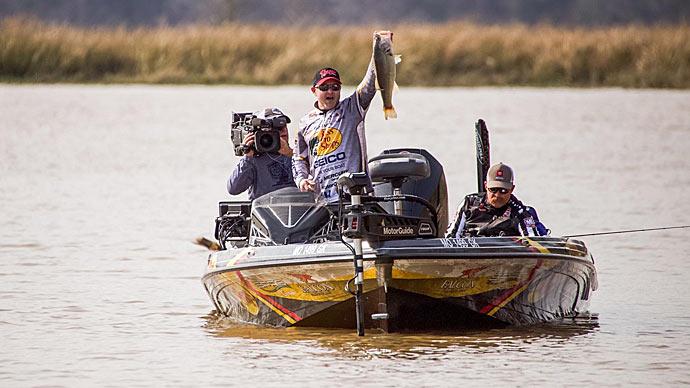A PGA golfer wouldn't show up to the course and play a whole round with a nine iron, and you shouldn't show up to the lake with one rod for all your presentations. Different lures require different rod/reel setups to be most effective, and having the wrong setup can dramatically affect both the number of bites you get – and how frequently you get them to the boat.
To help, we chatted with some of the top tour-level pros in the game and put together The beginner's guide for selecting the right rod, reel, and line for various presentations.
Lipless Crankbaits
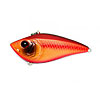
Rod: Typical lipless cranking includes covering water on vast flats, submergent grass beds, and stump fields. Therefore, the ideal lipless crankbait rod should be long to maximize cast distance and powerful enough to bury hooks at a distance and get a big fish turned toward the boat. Look for a casting rod in the 7'2" to 7'6" inch range, with a medium-heavy or heavy power with a fast tip.
Reel: Lipless cranking is all about the reaction strike, and you'll typically be cranking them pretty quickly. You should save your arms some fatigue and choose a high-speed reel with a gear ratio between 7.1:1 and 8.5:1.
Line: Most pros choose 15-17 pound co-polymer or fluorocarbon in open areas or around sparse cover for lipless cranking duties. Braided line can also be a good choice when ripping lipless cranks through thicker grass, although braid can cause more fish to shake the bait due to its lack of stretch.
Spinnerbaits (Around Cover)

Rod: Winding a spinnerbait around cover is as classic as it comes in bass fishing, and although you won't find many anglers today using the short 5-foot long pistol grip rods that were so common in the 1980s, the ideal spinnerbait rod for close-quarters should still be shorter than many other techniques. Most top anglers opt for a medium or medium-heavy power rod between 6' and 7' long with a moderate fast taper.
Reel: The ideal reel for close quarter's spinnerbait fishing is something in a moderate gear ratio, like 6.1:1 or 6.4:1. You want to be able to fish it efficiently but still be able to slow it down to a crawl over stumps, logs, and laydowns.
Line: Because you're fishing around cover like wood, docks, and vegetation, the ideal line for spinnerbaits around cover is heavy 17 to 22-pound monofilament, co-polymer, or fluorocarbon.
Swim Jigs
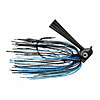
Rod: The hottest technique on both tours, swimming a jig, has effectively changed the way many anglers catch shallow water bass. Because the most common jig swimming areas feature heavy vegetation or wood, choosing a rod for the task is essential. Opt for a 7' to 7'6" medium-heavy to heavy power, fast action baitcasting rod. Choose a rod that is too light, and you'll risk losing fish.
Reel: Swim jig experts usually use a heavy-duty baitcaster in a moderate fast gear ratio between 6.1 and 7.1:1.
Line: Most anglers swim jigs on braided line in 40-65 pound test around heavy vegetation and wood. In more open water or clear water scenarios, switching to heavy 17-20 pound fluorocarbon is common.
Vibrating Jigs
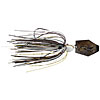
Rod: Like a lipless crank or spinnerbait, the vibrating jig is an excellent presentation for covering water and searching for big bites. The same rods that work for lipless cranks will also perform well for vibrating jigs. Think something in the 7'2" to 7'6" range, with a medium-heavy to heavy power and a moderate-fast tip – you want to have a little flex to let the fish load up.
Reel: Unlike a lipless cranking reel, the best reel for vibrating jigs should have a lower gear ratio. They work best when worked slow enough to vibrate, and as such, look for a reel in the 6.1:1 – 7.1:1 range.
Line: Although they can be worked effectively on both braid and fluorocarbon, most top pros rely on fluorocarbon for vibrating jigs, typically between 15 and 20-pound test, depending on the amount of cover and the size of the fish being targeted.
Jerkbaits
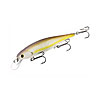
Rod: One of the best cold-water baits around, jerkbaits have a deadly darting, erratic motion when twitched and paused. To accurately and precisely impart said action, the right jerkbait rod is a necessity. Because the rod is twitched toward the water's surface, most pros opt for a shorter jerkbait rod, a medium power, and a moderate-fast tip in the 6' to 7' range. As tempting as using a super-fast tip because it's so responsive on the jerk, remember that bass often slaps at jerkbaits and gets hooked in weird places. You'll lose many of these fish if you have too fast an action. For smaller jerkbaits, don't be afraid to try a spinning model in the 6'6" to 7' range, with medium power and fast action.
Reel: Much of the damage is done on the pause for baitcasting tackle, so the gear ratio isn't as critical as other techniques. Something in the mid-range (6.1:1 – 7.1:1) will work fine. Do pay attention to the drag, though, as jerkbaits are commonly fished on light line, and the reel should have a smooth drag to accommodate hard-running bass.
Line: Depending on the water, most top anglers choose a line between 8 and 12-pound fluorocarbon for their jerkbait fishing. A lighter line will create a deeper dive and more erratic action, and the heavier line will bring the bait up and dull the action.
Carolina Rigs
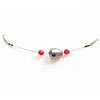
Rod: Structure fishing involves making long casts across deep water points, humps, rock bars, shell beds, and anything else that may be hanging out on the bottom. The Carolina rig is one of the all-time best presentations for effectively combing said structure. Because Carolina rig bites often occur in deep water and at the end of long casts, it's essential to have enough length to bury the hook at a distance while keeping the sensitivity high enough to feel the line go "mushy," which is often all you get. For that reason, most pros use a medium-heavy to heavy power, fast action rod between 7 foot 2 inches and 7 foot 8 inches for their C-rigging duties.
Reel: Carolina rigging is just slow dragging, but because fish are often moving when you set the hook, it's essential to have a reel with enough speed to catch up to a bass swimming toward the boat. Therefore, the team recommends a high-speed reel with a gear ratio between 7.1:1 and 8.5:1.
Line: Although some anglers use braided mainline and a fluorocarbon leader, most pros opt for a fluorocarbon mainline between 15 and 20 pounds for Carolina rigging and a 2-4 foot leader of 12-15 pound fluorocarbon at the business end. Fluorocarbon offers lower stretch and has abrasion resistance to hold up when being drug over rocks and shells.
Square Bill Cranks
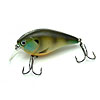
Rod: Square bills are one of the fastest-growing segments of the hard bait industry. The reason for that is simple – they flat our catch fish. Therefore, the ideal square bill rod will be short enough to cast around targets accurately, have a parabolic (slow) enough flex to keep big fish buttoned up, and be strong enough not to let the fish control the fight. Look for a medium-heavy to heavy power, moderate action baitcasting rod between 6 feet 8 inches and 7 feet.
Reel: The water conditions and season play a considerable role in retrieving a square bill. In colder water, you often slowly work it around cover, whereas in the summer, pros often burn them as fast as they can to trigger reaction strikes. To cover all the bases, use a reel with a mid-level gear ratio between 6:1 and 7:1.
Line: Because of the treble hooks, fluorocarbon, and monofilament, get the nod here. Go with something heavy enough to survive the beating a square bill will take as it's worked through grass, stumps, or docks. 14-20 pound line is an excellent place to start.
Shakey Head
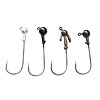
Rod: What used to be called the "jig worm" is now called the shakey head and can be found in every serious bass chaser's arsenal. Shakey heads typically require spinning tackle, and the ideal rod should be a medium power, fast action model between 6 feet 8 inches and 7 feet 2 inches long. Go shorter around close cover and docks and longer in deep open water.
Reel: A quality spinning reel in the 2500 or 3000 sizes will work fine, but ensure it has a good drag as this is generally a light line technique.
Line: With the shakey head, anglers can pick their poison. This presentation can be effectively fished with straight mono or fluorocarbon – usually 8 or 10-pound test- or fished with braid. Most pros opt for a 15 to 20-pound test with a 4 to 8-foot light fluorocarbon leader when using braid.
Buzzbaits
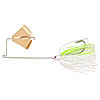
Rod: The buzzbait has been around a while, and it's just as practical now as it was back in its heyday. That may be an understatement, as many other topwater options are available today, and many bass haven't seen a buzzbait in a while. For throwing a buzzbait, the ideal rod should be able to make long casts and have the strength to wrestle a big one into the boat: a medium-heavy power, fast-action baitcasting rod in the 7-foot range for most uses. If you're fishing a buzzbait around heavy cover or thick grass or are in a place that produces giant fish – upsize to a heavy power model.
Reel: The ideal retrieve speed for a buzzbait is fast enough to keep it up on the surface but slow enough for the bass to get a good look at the bait. It helps to use a reel with at least a 7.1:1 gear ratio to save you some fatigue.
Line: Buzzbaits are another category in which our pro respondents issued mixed returns. Those pros at home on open water lakes with clear water generally relied upon monofilament in 17-20 pound strength. However, those at home on river systems and around grass opted for braid in the 40 – 65 pound range, so pick your poison.
Before you head out on the water, you'll want to ensure you have the proper equipment. You'll find that your baits' performance usually aligns with having the proper equipment. Having the proper rod/reel/line combo increases the bite, but it will also help you pull every bite back to the boat, into the net, and onto your Instagram. Heavy action for power presentations and lighter action for finesse is a general rule of thumb and should be followed closely. Follow these tips when setting up your rig before you wet a line, and you'll see a dramatic increase in your success!


